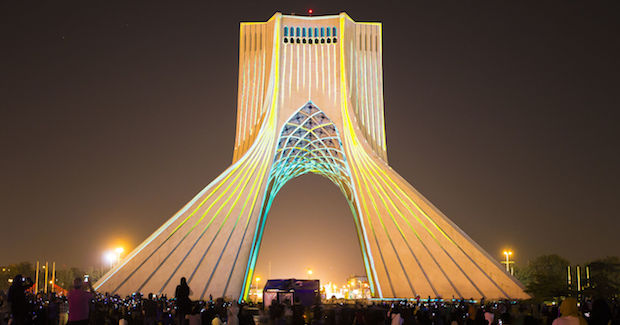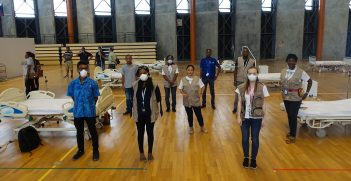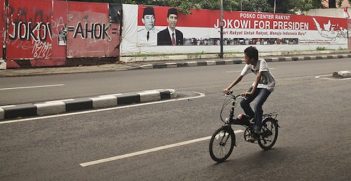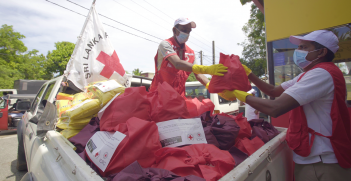Iran's Baha'i and the Freedom Tower

In the lead-up to Christmas, the United Nations General Assembly passed its 29th resolution since 1985 drawing attention to human rights violations in Iran. Among the groups persecuted, followers of the Baha’i Faith have long been prominent. Tehran’s Freedom Tower is a powerful symbol of these transgressions.
Towering above a public square in Tehran stands the mighty Azadi tower whose name seems ripe for a change yet again.
In 1979 after the Islamic revolution, this icon of the capital city of Iran was changed from Shahyad (King’s Memorial) to its present name, which means ‘Freedom’. However, in spite of the claims made in the current charm offensive led by Iranian diplomats and politicians, it is an undeniable fact that the country is a long way from freedom.
The reality is hidden from those foreign guests who succumb to traditional Persian hospitality and later say they saw nothing to complain about in the country. The United Nations General Assembly, however, has not been diverted by words that are not reflected in action.
Nor has it been persuaded by the techniques of false moral equivalence (“whataboutism”) which the Iranian government employs in its defence, for example taking Canada to task in the UN Human Rights Council for its alleged human rights violations.
New UN resolution
On 19 December, the UN General Assembly passed a resolution addressing Iran’s ongoing human rights violations as introduced by Canada and co-sponsored by 41 countries, including Australia. Iran has form, the resolution being the 29th such censure since 1985. Once again, the UN has formally condemned Iran’s “alarmingly high” use of the death penalty and its persecution of political opponents, human rights defenders, journalists and women’s and minority rights activists.The resolution expresses serious concerns about the severe limits on the right to freedom of religion or belief, making specific mention of the ongoing persecution of members of the Baha’i Faith, the biggest non-Muslim religious minority in the country.
The fate of the Baha’is has become a litmus test for the observance of human rights in Iran, and the litmus is definitely an acidic red, despite the public assertion by President Hassan Rouhani in his 2013 election campaign that “all religions, even religious minorities, must feel justice”.
Troubled history
The Baha’i Faith was was founded in Iran in 1844. The Muslim clerics who hold power in the Iranian government say there can be no divine religion after Islam, which was born in the 7th century. A fatwa by Supreme Leader Ayatollah Ali Khamenei says they are “unclean” and Muslims must avoid contact with them.
The clerics characterise Baha’is as political, despite the well-recognised practice of Baha’is to abstain from partisan politics and to strictly observe the laws of the land. It is also despite the worldwide recognition of the Baha’i Faith as an independent world religion.
Herein lies a great irony. The young Baha’i architect, Husayn Amanat, who designed the Shahyad Tower was forced to flee Iran in 1979, the very year his persecutors changed the name of the monument he designed to “Freedom Tower”. At that time, the agents of the new revolutionary government were arresting Baha’is to deliver them up for torture and execution, sometimes after sham trials. Some, though, disappeared without trace, and Baha’i women as young as 17 years had their lives terminated on the gallows for teaching the equivalent of Sunday school.
During that bloody period, Iran lost to other countries, including Australia, highly skilled Baha’i doctors, engineers, scientists, academics and business people who had become refugees. The Baha’i emphasis on the education of girls over the generations had ensured that their community had disproportionate numbers of educated women and men in its ranks. Husayn Amanat, for example, became an eminent architect in Canada.
In an official report in September 2016, the UN’s special rapporteur on human rights in Iran, former Maldives Foreign Minister Ahmed Shaheed, described a vigorous government-directed propaganda campaign against the Baha’is, and observed that they continued to be jailed and to face economic discrimination. Iran steadfastly refused to allow Dr Shaheed to enter the country throughout his six-year mandate, at the same time criticising his reports for lacking understanding of internal conditions.
In the case of the Baha’is, Dr Shaheed was spot on. A month later, the Baha’i International Community launched a publication confirming what he said and much more. The Baha’i Question Revisited exposed how the government has maintained its systematic, widespread persecution but has fine-tuned it to try to escape world scrutiny, using methods more difficult to quantify.
The authorities close shops and other businesses owned by Baha’is—harassing them all the while via the bureaucracy—while continuing to deny them jobs in the public service, and putting pressure on employers to sack Baha’is in their workforce. Tertiary education for Baha’is is banned, and attempts to provide private tuition are met with raids and arrests.
A round-robin of arrest and releases seems aimed at keeping the Baha’is on edge. Added to the mix are assaults, firebombings and the occasional murder of a prominent Baha’i. Seven Baha’i leaders, against whom no evidence was produced, remain in prison after being locked away in 2008.
The Baha’i Question Revisited counters the excuses the regime gives for its actions, itemises the arrests and imprisonments, tells of the desecration of cemeteries, gives details of the economic and educational discrimination, explains the roots of the persecution and describes the inspiring resilience of those under attack. It notes there has been a dramatic increase in anti-Baha’i propaganda with the appearance of 20,000 items of anti-Baha’i articles, web pages and broadcasts in official or semi-official media since 2014. In a 31-page appendix, the publication prints copy after copy of official documents that show the persecution is official government policy.
Successive Australian foreign ministers have condemned the persecution of Baha’is in Iran, and there have been resolutions expressing similar strong sentiments in the federal parliament. Other nations have also been forthright in their views.
As Iran continues to seek to improve its trading relationships with the world, many delegations will go to Tehran. They cannot miss the Freedom Tower. It is their chance to ask their hosts, ‘What of the architect who designed the monument, what of freedom in Iran?’.
Michael Day is a former journalist and is now media officer for the Australian Bahai Community.
This article is published under a Creative Commons Licence and may be republished with attribution.





